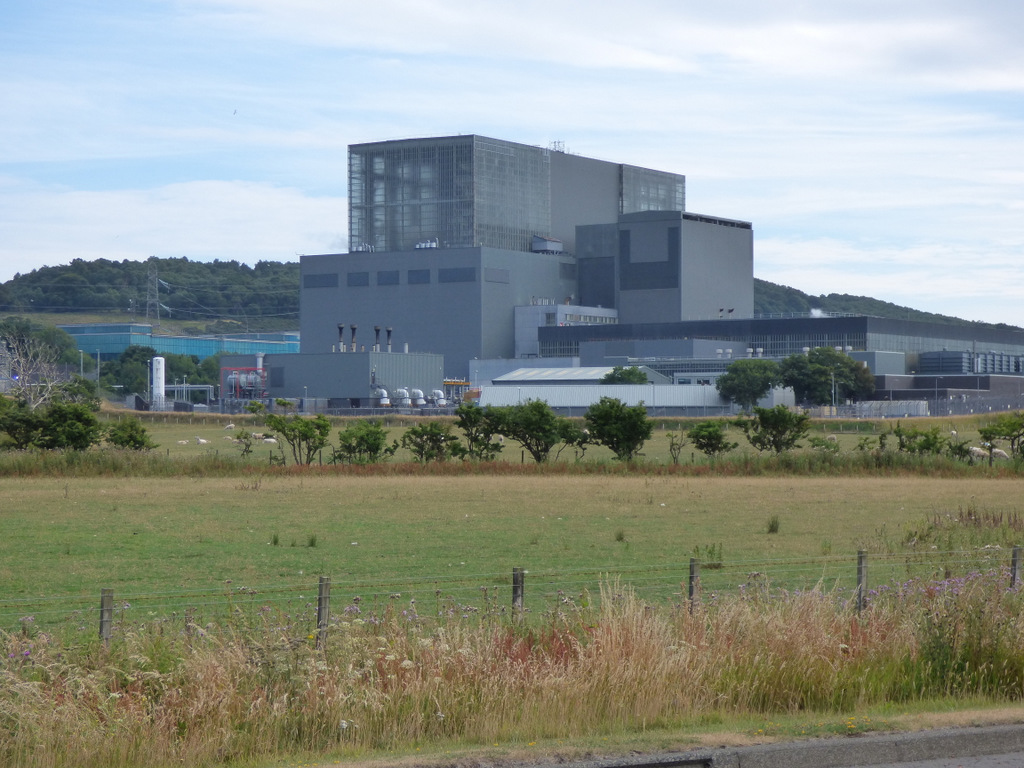The UK nuclear safety watchdog has boosted checks on two reactors in Scotland because of proliferating cracks in their graphite cores.
The Office for Nuclear Regulation (ONR) has raised its level of regulation for reactors three and four at Hunterston B nuclear power station in North Ayrshire from “routine” to “enhanced” to assess the dangers posed by hundreds of cracks.
Both reactors were closed down last year while the risks of the cracks leading to a major accident were investigated. Reactor three, the older, was shut on 9 March 2018 and has an estimated 370 cracks – in breach of the ONR’s safety limit of 350.
Reactor four was closed on 2 October 2018 and has an estimated 200 cracks. The reactors’ operator, EDF Energy, is urging ONR to allow each reactor to run with up to 700 cracks.
ONR is expected to make a decision in the next few weeks about reactor four. Critics predict that it will be allowed to reopen for a few months and then shut down again for inspections.
A decision on the future of reactor three looks much further off. EDF only submitted its safety case for restarting the reactor in June, and ONR is likely to need many months to assess it.
EDF has repeatedly postponed its planned restart dates for the two reactors, with number four currently scheduled to come back online on 22 July 2019 and number three on 1 October 2019.
The reactors started generating electricity in 1976 and can provide up to 20 per cent of Scotland’s electricity. They were originally due to close in 2006, but EDF has said that it wants to keep them both going until at least 2023.
In its latest annual report ONR disclosed that Hunterston B had been “elevated to an enhanced level of regulatory attention”. This was because assessment of the cracks was “intensive” and required “substantial additional effort”, ONR said.
The cracks in the graphite blocks that make up the reactor cores are caused by intense bombardment by radiation over decades. Experts fear blocks could split and trigger an accidental release of radioactivity.
Dr Ian Fairlie, a radiation consultant, and Dr David Toke, reader in energy policy at Aberdeen University, think that both reactors should remain shut. “Scotland doesn’t need electricity from Hunterston B, and the cracks in its reactors increase the risk of a catastrophic accident spreading radioactive contamination over Glasgow and Edinburgh,” they said.
“ONR should not allow either of the reactors three or four to reopen. It’s simply not worth the risk.”
Why Hunterston B Nuclear Power Station should not be restarted
The Green MSP, Ross Greer, welcomed ONR’s enhanced regulation. “Why on earth, with all the safety warnings we have heard, are we still talking about restarting the reactors instead of taking the practical steps on decommissioning and a just transition for the plant workers and for the wider local economy?” he said.
Rita Holmes, chair of Fairlie Community Council near Hunterston, said that her personal opinion was that ONR should not allow reactor three to restart. “Why take the risk when consequences from it being proved wrong could be dire?” she told The Ferret.
ONR said it its safety assessment of reactor four was continuing. “Whilst this assessment work is nearing completion, ONR has yet to reach a decision on whether reactor four can return to service or otherwise,” said an ONR spokesperson.
“ONR will only allow the reactor to return to service if we are satisfied that it is safe to do so. Until we reach such a decision, the reactor will remain shut down.”
The spokesperson added: “With regards to reactor three, we received the safety case on 17 June 2019. Our assessment of this will start in due course.”
EDF stressed that the numbers of cracks in the reactors hadn’t been counted but “projected” on the basis of predictions that had proved accurate. The company confirmed its latest forecast dates for returning both reactors to service.
“These dates present our most likely view of return to service,” said Hunterston B station director, Colin Weir. “It is not possible for us to confirm with certainty how long this process will take. Our top priority is that it’s completed with appropriate rigour.”
This story was published in tandem with the Sunday National. Photo thanks to Thomas Nugent via CC 2.0.














